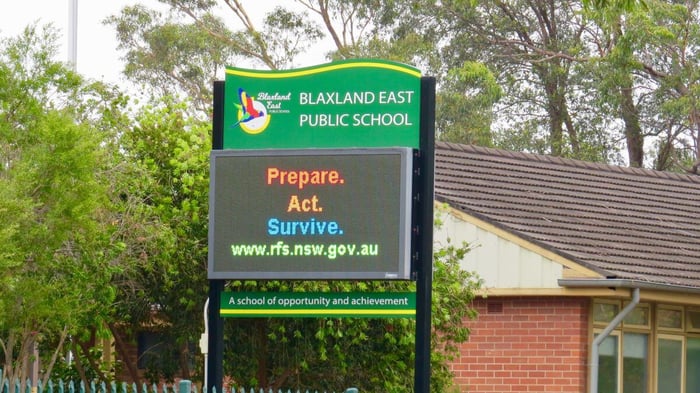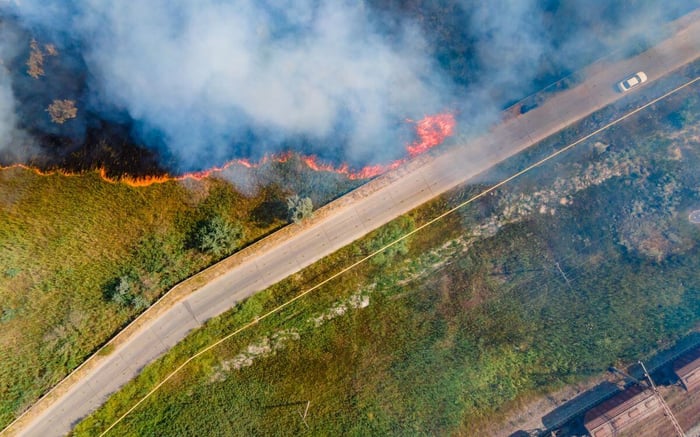As we mark International Day for Disaster Risk Reduction today, the 13th October, it’s a powerful reminder of the growing impact disasters have on children, youth, and the educational systems that support them. The numbers are alarming—400 million students globally have faced school closures due to extreme weather since 2022. This crisis disproportionately affects children in low-income countries and regions, where schools lose an average of 18 days per year to climate-related disruptions, compared to just 2.4 days in wealthier nations. The message is clear: We need to do more to protect children and ensure that schools remain safe, secure, and resilient.
Recent events across the globe, including in the US and Australia, underscore the importance of readiness. In North Carolina, Georgia, and Florida, we've seen firsthand the devastation caused by hurricanes, severe storms, and flooding, disrupting communities and threatening the well-being of hundreds of thousands of children. Similarly, in Australia, Far North Queensland experienced severe flooding and cyclones last December, while the Northern Territory faced its own flood disaster at the beginning of this year, cutting off entire communities. These events left families and schools isolated, highlighting the need for robust disaster planning and early warning systems. On top of this, the high fire risk days Australia frequently sees, particularly during the summer months, have also forced schools to close, further interrupting education and putting children at risk.

Bushfire reminders at a school in Australia (image via Shutterstock)
Schools serve as pillars of stability in children’s lives and play a critical role in disaster prevention. Beyond being places of learning, they can empower young people to understand and act on the risks they face, helping to protect not just themselves but also their families and communities. Every child and youth deserves this protection, especially as climate events continue to hit education the hardest in regions already struggling with poverty and inequality.
These recent disasters serve as a sobering reminder that preparedness is key.
Schools serve as pillars of stability in children’s lives and play a critical role in disaster prevention. Beyond being places of learning, they can empower young people to understand and act on the risks they face, helping to protect not just themselves but also their families and communities. Every child and youth deserves this protection, especially as the climate crisis continues to hit education the hardest in regions already struggling with poverty and inequality.
The United Nations Office for Disaster Risk Reduction (UNDRR) is leading the global charge to protect children from disasters. The International Day for Disaster Risk Reduction 2024 calls on countries to harness the education sector to reduce the disaster risks faced by school-aged children, particularly by focusing on two critical areas:
-
Protect children through safe schools: Children are entitled to be safe in their schools, and this starts with ensuring schools are disaster-resilient and part of disaster early warning systems.
-
Empower children through education: Age-appropriate education can help children understand and act on the risks they face. This builds their preparedness and ability to take early action in response to warnings, transforming them into agents of change for more resilient communities.
UNDRR also calls on governments to endorse and implement the Comprehensive School Safety Framework 2022-2030, developed by the Global Alliance for Disaster Risk Reduction and Resilience in the Education Sector (GADRRRES) and chaired by UNESCO and UNICEF. This framework provides a pathway for ensuring schools are prepared to withstand all types of hazards and that children’s safety, security, and educational continuity are prioritised.

Beginning of the fire in a grassy field near the edge of the highway (image via Shutterstock)
EWN actively promotes proactive disaster management, and our services are designed to help communities, businesses, and schools stay ahead of extreme weather. Our forecasting and alerting systems provide timely, accurate information that can make all the difference when it comes to preparedness. As we move deeper into storm season, it’s essential to leverage tools like ours to protect children, educators, and entire communities. EWN’s technology offers real-time insights, early warnings, and tailored alerts that help reduce disaster risks, especially for schools.
We need a multi-hazard approach to school safety—one that prepares us for all risks and hazards in the education sector. Together, we can protect children, safeguard their right to education, and ensure that no child is left vulnerable to the growing threats of climate change. By equipping schools with the tools to be prepared, we can help protect children, staff, and infrastructure from the growing threats posed by climate change and extreme weather.
Get in touch with us today to learn how EWN’s services can support your disaster readiness efforts and safeguard your community. Together, we can build a safer future.